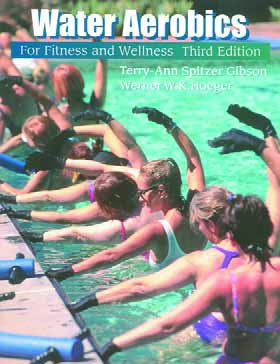Exercising Sense

If there’s one thing we all know without any question, it’s that nobody is getting any younger. In fact, if you read any of the demographic information available these days about the “graying” of the Baby Boom generation, it’s clear that our entire country is becoming older en masse.
During the past year, I’ve experienced for myself what this means to us in the watershaping trades in the form of a dramatic uptick in the number of clients, most of them elderly, who have approached our firm looking for swimming pools primarily for the purpose of aquatic aerobics and other forms of water exercise.
For the most part, these prospects and clients have made it clear they would not otherwise be interested in purchasing a pool: They need it, they say, to pursue therapy for a range of physical conditions and ailments.
With that trend in mind (and anticipating the needs of my own aging frame as well), I decided to learn more about the world of water exercise and came across a terrific book, Water Aerobics for Fitness and Wellness by Terry-Ann Spitzer Gibson and Werner W.K. Hoeger (third edition, published by the Wadsworth division of Thompson Learning in 2003).
If you’ve ever had any doubt about the potency of the water-exercise movement, these authors, both PhDs in health and fitness fields, use statistics, trend analysis and commonsense discussions to make their case in the strongest possible terms. They write at length about obesity and a surprising array of associated diseases and conditions. They also discuss how growing older makes it increasingly important for all of us to take our physical condition seriously.
One of the most effective treatments for all of these aches, pains and ailments, they say, is exercise in swimming pools. Along the way to that conclusion, they lead the reader through a compelling, eye-opening set of arguments, discussions and recommendations.
You don’t have to be a physical therapist to know that high-impact, land-based activities such as running, aerobic training or weight-lifting can lead to a range of injuries that will either aggravate an existing condition or even lead to new problems. When submerged in the forgiving, near-weightless environment of the water, those concerns are greatly diminished if not completely eliminated.
Fact is, there are a great many people for whom the only effective way to exercise is in water, simply because they don’t risk hurting themselves. Furthermore, the even resistance provided by water yields a form of exercise that can greatly accelerate healing processes.
One of the things that really impresses me about this book is that, while it’s basically about water exercise, it’s also about wellness in a broader sense. There’s wonderful information on fitness assessment and nutrition, for example, alongside exercise-specific information relating to issues such as the differences between deep- and shallow-water exercise routines.
From the design perspective, I’ve learned that pools built for exercise need to have flat, larger-than-usual shallow areas and that it’s important to consider the texture of the surface material. I also found good information on various products and apparatus that can assist users in maximizing the benefits they experience.
As a watershaper, I believe it’s important to understand the full range of benefits our products can yield, and I can personally think of nothing more powerful than the ability we have to contribute to the physical, mental and even spiritual well-being of the people we serve.
Mike Farley is a landscape designer with more than 20 years of experience and is currently a designer/project manager for Claffey Pools in Southlake, Texas. A graduate of Genesis 3’s Level I Design School, he holds a degree in landscape architecture from Texas Tech University and has worked as a watershaper in both California and Texas.










